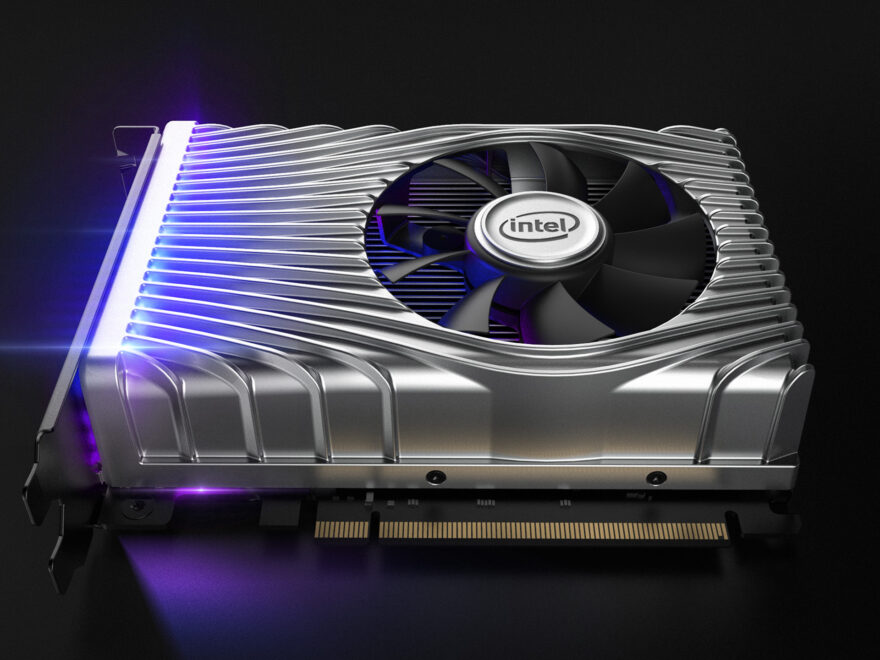The Intel Arc GPU branding aligns with a range of core i3, i5, i7, and i9 processors. This allows serious gamers to gauge their performance to the next-gen level. Thanks to Intel HPG graphics architecture that utilizes Intel’s XE cores, XE Media Engine, XE Display Engine, and XE Graphics Pipeline. Each XE core supports 16 x 256-bit Vector Engines, 16 x 1,024-bit Matrix Engines, and 192KB of shared memory. These cores support overclocking. Do you know about this process?
Let’s see:
What is overclocking?
Overclocking is the way to custom-tune your pcs processor. You can also tune other important components such as RAM..
There are three internal settings which commonly helps in adapting with processors base like clock speed(applies to different cores), core multipliers(there’s a presence of multiplier to each core), core voltage(electricity which the processor uses to operate)
Overclocking Intel Processors:
Do you need clarification on overclocking? Don’t get confused! Here, let’s dig more into overclocking capabilities.
A subset of the famous Intel core processor family is built for overclocking. Typically, an Intel Arc CPU can automatically run 1GHz or 2GHz faster than its counterparts. Overclocking is the domain of power users who want excellent possible gaming performance. It is basically for pro gamers. It’s also important to ensure the relative benefits of overclocking and their key edges:
XeSS (Xe Super Sampling):
Intel Arc GPU has feature XeSS, a cutting-edge upscaling technology similar to DLSS (Deep Learning Super Sampling). XeSS utilizes AI algorithms to upscale lower-resolution images to higher resolutions, improving image quality and game performance.
Enhanced Media Engine:
The Intel Arc GPU’s enhanced media engine enables gamers to enjoy smooth and immersive gameplay while simultaneously streaming or recording their gameplay sessions. This feature offloads the encoding and decoding tasks to the GPU, reducing CPU usage and ensuring minimal impact on gaming performance.
Real-Time AI:
The Intel Arc GPU leverages its AI capabilities to enhance real-time gaming experiences. AI algorithms can improve image quality, reduce input lag, and optimize game settings based on individual preferences, resulting in a more personalized and enjoyable gaming experience.
Virtual Reality (VR) Enhancements:
Intel could introduce specific features to improve the VR gaming experience. This may involve reducing motion sickness through advanced motion tracking algorithms, optimizing latency for smoother gameplay, or providing better compatibility with VR headsets and accessories.
Advanced AI Integration:
Intel might explore further integrating AI technologies into its GPU architecture. This could involve AI-powered features like intelligent upscaling, advanced anti-aliasing techniques, or real-time image enhancement for sharper and more immersive visuals.
Dynamic Resolution Scaling:
Intel may implement dynamic resolution scaling techniques, automatically adjusting the rendering resolution based on GPU load and performance requirements. This feature can help maintain consistent frame rates in demanding games, ensuring a smoother gaming experience.
Advanced Haptic Feedback:
Intel might explore integrating haptic feedback technology into the Arc GPU, enhancing immersion by providing tactile sensations during gameplay. This feature could offer a more immersive gaming experience, especially in virtual reality (VR) environments.
Cross-Platform Support:
Intel could focus on providing improved cross-platform support for gamers, ensuring compatibility and optimized performance across different operating systems and gaming platforms.
Dynamic FidelityFX Super Resolution (FSR) Support:
The Intel Arc GPU could potentially support AMD’s FidelityFX Super Resolution technology. FSR is a spatial upscaling technique that enhances performance by rendering games at a lower resolution and then upscaling them to achieve higher frame rates without significant loss in visual quality.
Customizable RGB Lighting:
Intel incorporates customizable RGB lighting on the Intel Arc GPU. This feature allows gamers to personalize the appearance of their gaming setup, adding a visually appealing touch with customizable lighting effects that can sync with other RGB-enabled components.
Smart Memory Management:
The Intel Arc GPU potentially features smart memory management capabilities, optimizing memory allocation to ensure efficient usage and performance. This can result in smoother gameplay, reduced stuttering, and improved overall gaming experience, especially in memory-intensive games.
Conclusion:
Intel Arc GPU is designed to deliver powerful gaming performance, enabling hardcore gamers to enjoy smooth gameplay, high frame rates, and immersive visuals. It can easily handle demanding games and graphics-intensive tasks, providing an exceptional gaming experience.

